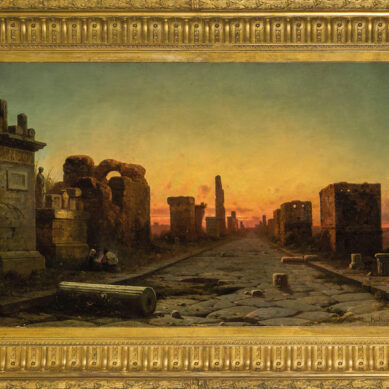You searched
Sculptor
Leonardo Bistolfi
Are you interested in the sales or the purchase of his artworks?
We buy works of this artist
and of other painters and sculptors from the 16th century to the first half of the 20th century
The Berardi gallery offers a free and without obligation service for evaluation of ancient and modern art . To find your way in the art market, very complex and full of nuances, it is better to rely on a professional consultant who can answer fast and concretely to your needs. The clarity of the answers will resolve effectively the need to estimate or sell an asset.
Contact us immediately without commitment
Answers also in 24 hours:
Leonardo Bistolfi
Leonardo Bistolfi
Leonardo Bistolfi shows a strong propensity for drawing and sculpture from an early age. His origin is significant from a family of carvers who allowed him, in 1875, to move from Casale Monferrato to Milan to attend the Brera Academy and then to Turin at the Albertina Academy, where he attended Odoardo Tabacchi’s courses.
He starts from realism, imbued with disheveled suggestions that come from the observation of Giuseppe Grandi and Tranquillo Cremona, but the filter of the social question is also very strong, dealt with by Bistolfi within Socialism, which he approaches thanks to Giuseppe Pellizza da Volpedo. It is no coincidence, in fact, that his first works contain strong references to the worker question, such as Arduo lavoro, presented in Turin in 1882, The washerwomen and Pei campi, exhibited in 1884 and Boaro the following year.
These works are still deeply linked to typically nineteenth-century realism, but Bistolfi begins to work, in his Vanchiglia studio in Turin, on sculptures characterized by a certain symbolic vein and also on landscapes of Fontanesian inspiration.
In the 1980s, symbolism made its way through his works. Mainly engaged in dramatic and sinuous funerary works, he is nicknamed “sculptor of pain and death”. In this way Bistolfi becomes one of the main representatives of the art nouveau symbolism of the end of the century, through a supple stroke and a message of decadent allegory that inspires the next generation of artists.
As mentioned, this symbolic vein is initially found above all in funerary works, such as The Angel of Death, created for the tomb of the Braida family in Turin.
But the real turning point came in 1889, when he created the funerary monument The Sphinx for the Pansa family, a sculpture full of accents from the Nordic secessions, with sinuous and hard lines at the same time. The Sphinx, enigmatic in its silence, hieratic and closed in its mystical meaning, represents Bistolfi’s definitive passage to Symbolism.
La Bellezza della Mortecappears at the Venice Biennale in 1895, a bas-relief full of spiritual tension, in which the decorativism of the lines merges with the hollowed-out backdrop where the deceased lies, welcomed by a beautiful floral death. Death and Life, Pain Comforted by Memories, The Holocaust and The Brides of Death, are other funerary works with an intense allegorical meaning and a powerful secessionist trait, which also returns in the bas-relief The brides of death.
The sculpture, created for the Vochieri funeral chapel in Frascarolo Nomellina and exhibited at the Festival of Art and Flowers in Florence in 1896, develops vertically, using a sort of Donatellian stiacciato, applied to elongated and slender figures, almost sucked by the power of death that draws them to itself in a sort of macabre dance.
A personal room is dedicated to him at the 1905 Biennale, in which, among other works, Il funeral, Fiamma, Resurrezione, La Vita, Mater Dolorosa, The Cross and The voices of the tomb appear. The Sacrifice is moved to the Biennale of 1912, The bed of roses to the exhibition of the Roman Secession of 1913.
He continued to devote himself to sepulchral sculpture for many years, exhibiting intensely until 1929, when he sent Garibaldi’s head to the exhibition of the Fascist Syndicate of Turin. He died in La Loggia in 1933.





